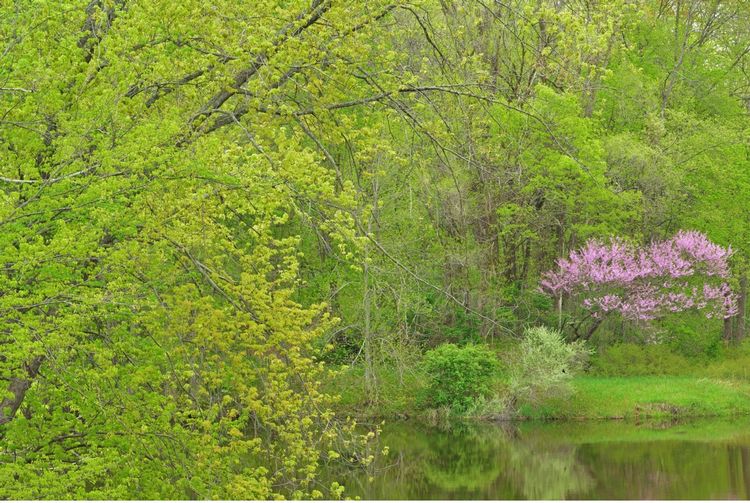
Researchers from Michigan State University, with colleagues from the University of South Dakota, recently published a paper analyzing socioecological influences on carbon in agroecosystems in the journal "Landscape Ecology." Lead author Gabriela Shirkey — a Ph.D. candidate with the Department of Geography, Environment and Spatial Science at Michigan State University — was joined by Ranjeet John, Jiquan Chen, Venkatesh Kolluru, Reza Gojani Amirkhiz, Sandra T. Marquart-Pyat, Lauren T. Cooper and Michael Collins in publishing “Land cover change and socioecological influences on terrestrial carbon production in an agroecosystem." This research effort aimed to better understand the relative contributions of anthropogenic and environmental factors in terrestrial carbon production as well as the societal influences on potential carbon sequestration efforts.
Co-author Lauren T. Cooper, of the Forest Carbon and Climate Program, shared these thoughts on the research: “Land cover change is one of the biggest drivers of climate change. While many studies focus on challenges and solutions at a national level, in this study we had the opportunity to look at historical and current land cover right here in Michigan. As Michigan looks to adopt nature-based climate solutions, this research highlights the role of distributed decision-making in protecting remaining natural places and in developing ambitious plans for restoration—including improving carbon storage, ecosystem function, and connectivity.”
Research findings indicated the most significant land cover types contributing to terrestrial carbon production were cropland, forestland, and urban areas, respectively. Croplands are known to have high contributions to NPP throughout the Midwest due to large corn-soy rotations. However, cropland and forestland cover decreased during the study period while urban land cover increased. Urbanization of the agroecosystem and removal of cropland, forest, and prairies can decrease not only NPP, but also carbon sequestration in soils as well as the available supply of food and fiber. Urbanization is also associated with an increase in managed turf which, while it represents a measurable amount of carbon sequestration, increases water demand. This is significant because turf, such as in sports fields and golf courses, has been identified as the largest irrigated “crop” in the US.
However, anthropogenic activities such as land use and management may have a stronger influence on NPP than land cover change alone. Socioeconomic changes in land management have been documented across the study area including large changes in land use, farmland management, and shifts in land ownership and tenure. In the context of the study’s landowner survey data, decisions about land use and management are influenced more by environmental stewardship motivations than beliefs about climate change or carbon cycle concerns.
The research findings support the authors’ hypotheses that human activities—including regional development and land management—have a collectively higher impact on NPP and LCLUC than abiotic drivers. By integrating both societal and ecological geospatial data, the authors constructed a socio-environmental system (SES) modeling framework suitable for replication in subsequent landscape studies which may aim to evaluate the patterns and processes of human-environmental interactions. The authors encourage future research and the consideration of additional metrics such as edge-effects, fragmentation, and patchiness of land cover types to further evaluate landscape composition in SES models.
Read the full article.
This story was repurposed for publishing from the College of Agriculture and Natural Resources.